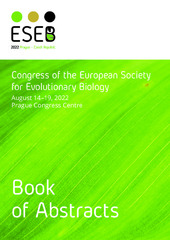Приказ основних података о документу
Lead induces sex and development related differential Mtn gene expression in two Drosophila species
| dc.creator | Rakić, Mina | |
| dc.creator | Patenković, Aleksandra | |
| dc.creator | Stamenković-Radak, Marina | |
| dc.creator | Tanasković, Marija | |
| dc.creator | Jelić, Mihailo | |
| dc.creator | Lapčević, Simona | |
| dc.creator | Savić Veselinović, Marija | |
| dc.date.accessioned | 2023-03-14T13:49:05Z | |
| dc.date.available | 2023-03-14T13:49:05Z | |
| dc.date.issued | 2022 | |
| dc.identifier.uri | http://radar.ibiss.bg.ac.rs/handle/123456789/5496 | |
| dc.description.abstract | Lead is one of the most abundant pollutants extensively used all through human history and, with industrialization and exploitation of its ores, its accumulation in the environment has increased over time. As a non-essential heavy metal with high persistence and toxicity, lead has severely negative effects on all organisms, but the adaptation of populations and species in contaminated environments can be through different responses. Metallothioneins (Mtn) are involved in heavy metal detoxification as metalbinding proteins present in all living species, with six isoforms found in the Drosophila genus. It is presumed that some of them have higher specificity for certain metal ions, such as Pb2+, but the question arises if there is a specific response related to species, sex and developmental stage. To further corroborate the metallothioneins with an affinity for lead ions, the expression of six Mtn genes (MtnA-F) was quantified by RTqPCR in larvae and adult female and male flies of D. melanogaster and D. subobscura reared on the standard medium and medium enriched with lead-acetate for thirteen generations and lead bioaccumulation was measured in adult flies. Our experimental design allows for the detection of variation in expression of Mtn genes in response to lead exposure between species, sexes and developmental stages. Results also show a correlation between Mtn gene expression and measured lead bioaccumulation in adult male and female flies of both species. | sr |
| dc.language.iso | en | sr |
| dc.publisher | European Society for Evolutionary Biology | sr |
| dc.relation | info:eu-repo/grantAgreement/MESTD/inst-2020/200178/RS// | sr |
| dc.relation | info:eu-repo/grantAgreement/MESTD/inst-2020/200007/RS// | sr |
| dc.rights | openAccess | sr |
| dc.source | Book of Abstracts: Congress of the European Society for Evolutionary Biology; 2022 Aug 14-19; Prague, Czech Republic | sr |
| dc.subject | metallothioneins | sr |
| dc.subject | lead pollution | sr |
| dc.subject | Drosophila | sr |
| dc.title | Lead induces sex and development related differential Mtn gene expression in two Drosophila species | sr |
| dc.type | conferenceObject | sr |
| dc.rights.license | ARR | sr |
| dc.rights.holder | © 2022 by the European Society for Evolutionary Biology | sr |
| dc.description.other | Book of Abstracts: Congress of the European Society for Evolutionary Biology; 2022 Aug 14-19; Pague, Czech Republic. European Society for Evolutionary Biology; 2022. p. 471. | sr |
| dc.citation.spage | 471 | |
| dc.type.version | publishedVersion | sr |
| dc.identifier.fulltext | https://radar.ibiss.bg.ac.rs/bitstream/id/12527/ESEB2022-471.pdf | |
| dc.citation.rank | M34 | |
| dc.identifier.rcub | https://hdl.handle.net/21.15107/rcub_ibiss_5496 |

